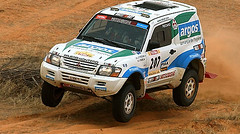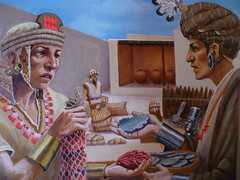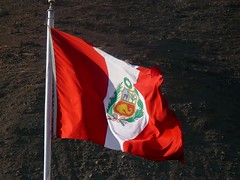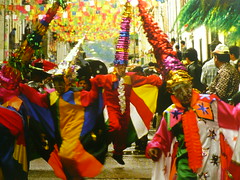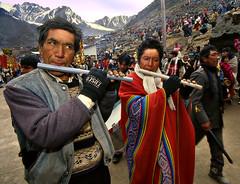Yungay
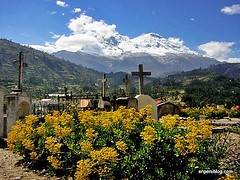 Could you imagine the ground trembling beneath your feet with such tremendous force that you could barely stand? Then have it stop abruptly with just enough time to get outside to apparent safety before a deep rumbling again shook the ground and darkness enveloped you? Nor could the little town of Yungay and its 25,000 inhabitants imagine they would be victims of Peru’s worst ever natural disaster.
Could you imagine the ground trembling beneath your feet with such tremendous force that you could barely stand? Then have it stop abruptly with just enough time to get outside to apparent safety before a deep rumbling again shook the ground and darkness enveloped you? Nor could the little town of Yungay and its 25,000 inhabitants imagine they would be victims of Peru’s worst ever natural disaster.
The earthquake lasted less than a minute, but measured a massive 8.0 on the Richter scale. At 3:23pm the Nazca and South American tectonic plates shifted, spelling the end for picturesque little Yungay in the mountainous Andean region of Ancash. The earthquake was so powerful that it was felt far and wide across the country causing untold damage to infrastructure and claiming many lives as buildings collapsed.
Yungay, in the famed Callejón de Huaylas – a valley formed by the towering cordilleras Blanca and Negra, must also have been significantly damaged. Little did the survivors know, the quick deaths received by those crushed by falling buildings were a blessing. As they rushed outside, or to churches to pray for their salvation, the earth shook once more.
It must have been a tremendous sight.
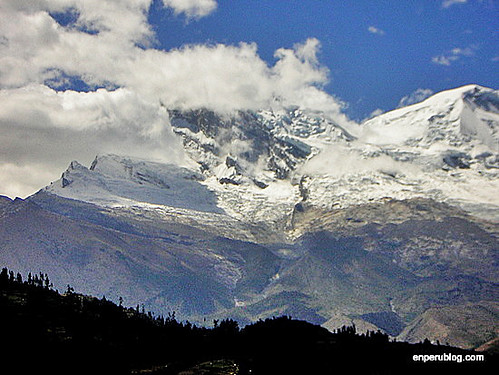
Still easy to see where the part broke free
From every part of Yungay people could see the brilliant white snow-capped giant that loomed over it. Mount Huascarán, Peru’s highest peak, had effectively split in two.
A huge segment of the mountain had broken off. Ten million cubic metres of rock and ice thundered down the mountain and headed straight for the stricken town.
As the avalanche picked up speed, it accumulated another seventy million cubic metres of icy debris. The force of the fall and the mixing of rock and ice underwent a blender-effect. Solid rock and ice became mud and hundreds of millions of boulders the size of cars.
The worst part is, the people of Yungay would have seen it coming and would not have been able to do a thing about it.
Projections estimate that it would have taken about 2 or 3 minutes for the kilometre-wide wave to hit the town. History suggests that the townspeople would have headed straight for the churches. It is unlikely that anyone tried to escape the town – there was clearly nowhere to go.
25,000 people where crushed and buried by the landslide. Hauntingly, only the tops of the palm trees of the plaza could be seen above the mud, and it was an image that was etched into the memory of those who saw the events on TV across the country and around the world.
But amidst the tragedy there was relief. By some miracle the children of Yungay, some 300 of them, were attending a circus in the local stadium. It was high enough and strong enough to survive the landslide and save the lives of the children. A handful of others who were at the town cemetery on higher ground also survived.
Among these survivors was the engineer Mateo Casaverde who was accompanied by French geophysicist G. Patzelt and his wife.
He recalls:-
We were driving from Yungay to Caraz while, passing the cemetery of Yungay the earthquake started. You could see clearly the vertical part of the seismic waves rolling along the asphalt of the highway.
We abandoned the car when the earthquake was just finishing. We heard a deep noise, different from the earthquake, but not so much so. It was coming from Huascarán and we saw between the mountain and Yungay a giant cloud of dust. The quake had caused an avalanche. Part of Huascarán was falling.
The only place where we were that offered any protection was the cemetery. It was built on an artificial hill, the remains of the pre-Inca pyramid. We ran about 100 metres from the highway before entering the cemetery, which had also suffered from the effects of the earthquake.
I turned to look at Yungay. At that moment you could see a giant wave, about 60 metres high, about to hit the left hand side of the city. This wave was certainly not dust.
We ran up the stairs. We reached the 3rd level of the structure, which was more damaged, and found a man, a woman and three children trying to get up higher. We turned to the right, and ran along the third level. It was then that the wave hit.
The avalanche reached the cemetery hitting the frontal part, practically at the same height as the third level. It passed us just below out feet, maybe about 5 metres away. The sky went dark. We looked around. Yungay and its many thousands of inhabitants had disappeared.
It wasn’t just Yungay that suffered. The earthquake claimed 100,000 lives in total, whole towns across Ancash were levelled, including those on the coast. Roughly 150,000 were injured, 1,000,000 left homeless and 3,000,000 affected in some way.
The Peruvian government declared Yungay a national cemetery and a monument has been built to remember the dead. The location where the town stood, and the monument can be visited from Huaraz. Poking above the surface are the palm trees of the plaza, bits of wall and part of the cathedral and the crumpled remains of a bus.
The town is now a graveyard and a monument to Peru worst human tragedy. And it is still towered over by the biggest mountain in Peru.
Yungay before the Earthquake:
Tags: ancash, disaster, earthquake, huascaran, yungay



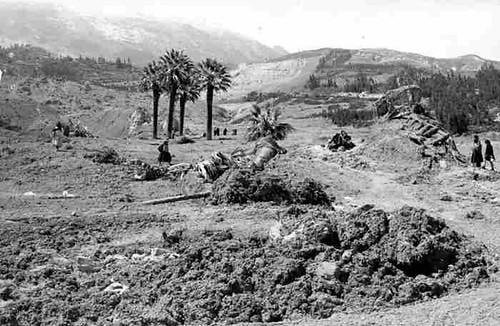

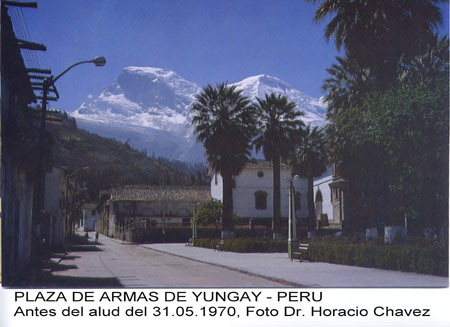

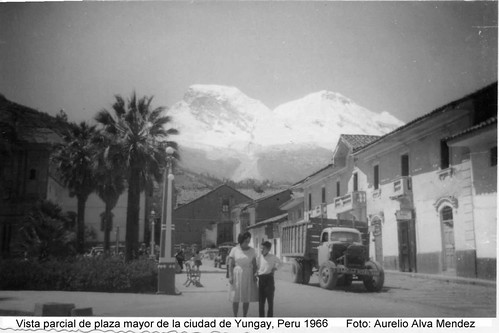


![Part 1: A visit to the men’s prison in San Juan de Lurigancho [Featured]](http://farm4.static.flickr.com/3625/3395439630_49fd35692a_m.jpg)
